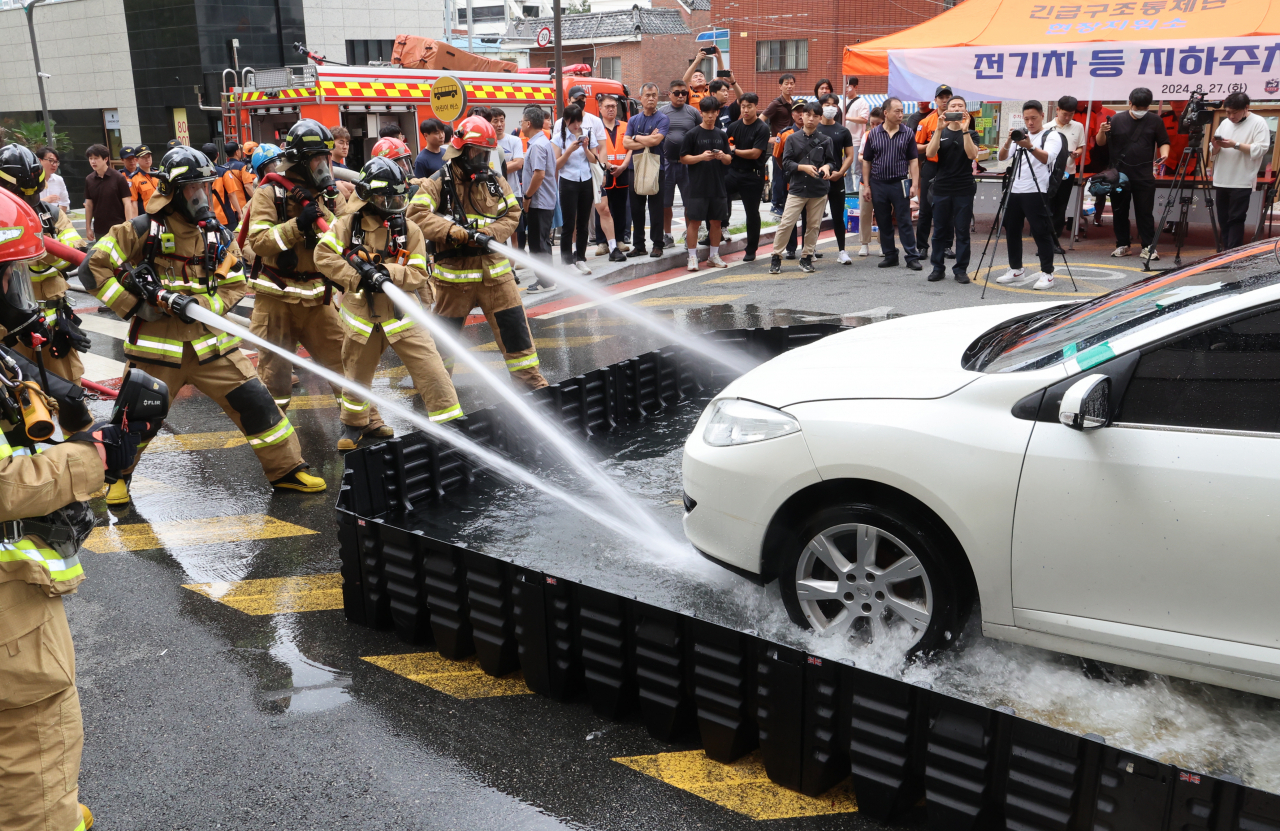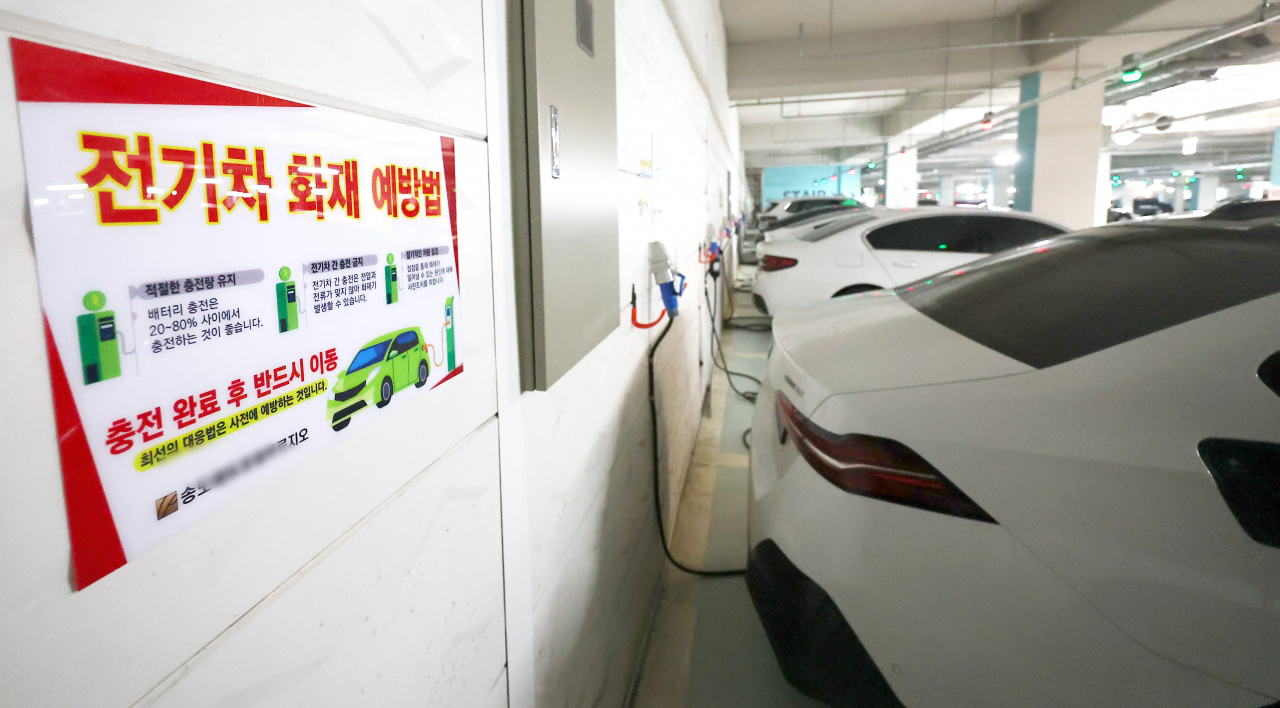 |
Firefighters train on how to deal with an electric vehicle fire in an underground parking lot, using a mobile immersion tank to extinguish the flames while towing the vehicle to ground level in Busan on Aug. 27. (Yonhap) |
Nearly 60 percent of all slow and rapid electric vehicle charging stations in South Korea are installed underground, with the majority being slow chargers lacking overcharge prevention systems -- a major fire risk.
According to a report provided by the Environment Ministry to Rep. Lim Lee-ja of the People Power Party, 373,961 EV charging stations were installed nationwide as of July 2024. This marks the first time the ministry has fully assessed the total number of underground EV chargers.
The study comes after an accident on Aug. 1 where a Mercedes-Benz EV caught fire in an underground parking lot in Incheon, destroying 140 vehicles and damaging the apartment building’s systems.
Of the charging stations tallied, the exact locations of 343,889 stations were pinpointed as they had received installation subsidies from the Ministry of Environment. The study primarily focused on subsidized charging stations, as the current status of the remaining 30,072 EV charging stations that did not receive subsidies from the Environment Ministry is still under review.
Out of the 343,889 EV charging stations, the study identified 38,348 as rapid charging stations and 330,569 as slow charging stations.
A total of 201,935, or 58.7 percent, of rapid and slow EV charging stations were identified as installed underground, while 41.3 percent, or 141,953 EV charging stations, were identified as installed above ground.
 |
A fire hazard prevention notice is put up near an electric vehicle charging station at an underground parking lot of an apartment complex in Songdo, Incheon, on Aug. 12. (Yonhap) |
Currently, most of the slow EV charging stations installed in Korea are not equipped with a power line communication modem, which allows charging stations to monitor and control the charging status via existing power lines to prevent overcharging.
As many EVs are equipped with battery management systems that monitor the condition of their batteries, having a PLC modem on EV charging stations doubles protection against overcharging.
Following the EV fire last month, the government has stated that, starting in 2025, it will only allow the installation of slow EV charging stations equipped with PLC modems.
As for existing slow EV charging stations, the government will begin replacing half of those installed more than five years ago with ones equipped with a PLC modem starting next year. The Environment Ministry estimates the number of such charging stations to be up to 40,000.
Additionally, the government added that it would mandate wet pipe sprinkler systems to be installed in all underground parking lots, and expand the amount of firefighting equipment for dealing with EV fires in fire stations nationwide.
However, despite an increase in demand since August to move EV charging stations outside of underground parking lots due to fire hazard risks, plans to move the charging stations above ground are not being widely discussed. Only a few local governments based in Ulsan, Incheon, Jeonju and Gongju have announced plans to support or encourage the relocation of underground EV charging stations.
Amendments to the Korea Electro-technical Code in November 2023 state that newly built buildings can only install EV charging stations up to the third basement level. However, this amendment faces controversies as floors without parking spaces are excluded when counting the number of floors, making it possible to install EV charging stations well below the third basement floor.
The third basement floor is much deeper than experts and local governments recommend.
For example, the Korea Fire Safety Standards recommend that EV charging stations not be installed underground. However, in an unavoidable situation, charging stations should be installed on the second basement floor close to an entrance or a ramp.
“Until now, policies regarding EVs have been weak in terms of management, such as preventing fires, as such policies were only focused on expanding and distributing EVs (in Korea),” said Rep. Lim in a press release. “A fire response plan for different EV charging stations must be established as soon as possible.”







![[Today’s K-pop] Blackpink’s Jennie, Lisa invited to Coachella as solo acts](http://res.heraldm.com/phpwas/restmb_idxmake.php?idx=644&simg=/content/image/2024/11/21/20241121050099_0.jpg)